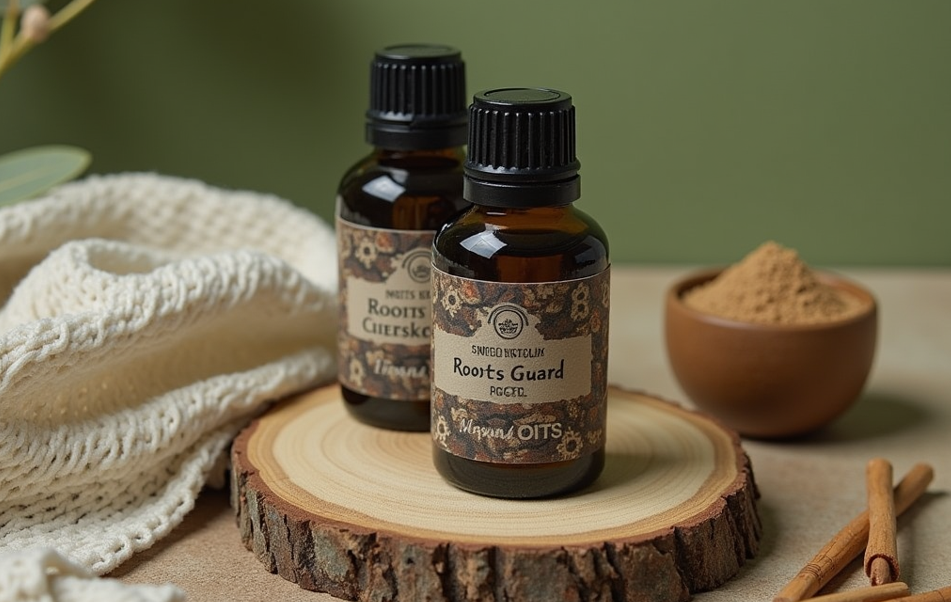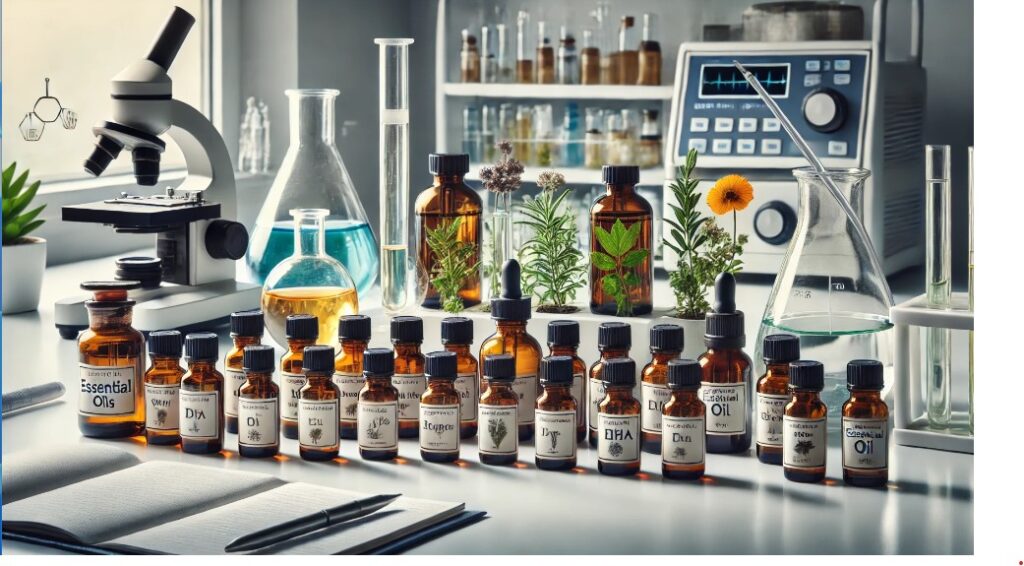In the world of essential oils, not all products are created equal. The rise in popularity of natural wellness has flooded the market with oils of varying purity, potency, and safety. For those seeking genuine therapeutic benefits, knowing how to spot real vs fake essential oils, concentrated from diluted, and pure from synthetic is vital.
Essential oils are powerful botanical extracts, and the difference between a high-grade oil and a low-quality one can mean the difference between healing and harm.
Not all essential oils are created equal. Understanding the different types available helps you choose products that are safe, effective, and aligned with your health goals.
These are the gold standard in natural wellness.
Often marketed as “natural” but contain undisclosed additives.
These are not essential oils—they’re artificial scent replicas.
Tip: Always choose oils with transparent sourcing, verified purity testing (like GC/MS), and clear botanical labeling to ensure you’re receiving genuine plant power—not a chemical imitation
Using oils safely also means pairing them wisely—for tips on applying essential oils for glowing, clear, healthy skin, check out our detailed essential oil skincare application guide.
As a formulator and conscious mom, I’m extremely careful with every essential oil I bring into my home—especially with a small child and my tiny dog Teddy around. Here’s my exact step-by-step process to make sure the oil I’m about to use is truly pure, therapeutic, and safe.
In this article, I walk you through each of these steps in detail, so you can confidently verify your own essential oils at home.
If the label doesn’t list the exact botanical name (like Lavandula angustifolia for true lavender), I don’t even consider it. This ensures I’m getting the right plant species, not a cheaper or synthetic substitute. Genuine essential oils always list the Latin (botanical) name of the plant—for example, Lavandula angustifolia for true lavender. This indicates plant specificity and quality sourcing.
All my oils come in dark amber or cobalt glass bottles with a tight dropper or cap. If it’s in clear plastic or looks cheap, it’s a red flag. Authentic oils are stored in dark amber or cobalt blue glass bottles, which protect volatile compounds from light damage. The bottle should have a tight-sealing cap or dropper to prevent oxidation.
I open the cap and inhale gently. Real essential oils evolve and have depth—if the scent is flat, sugary, or chemical-like, I toss it. My nose knows. Pure oils have a multi-layered, plant-like aroma that evolves over time. If the scent is overly sweet, sharp, artificial, or flat, it’s likely synthetic or diluted.
I only buy from companies that share their GC/MS test results. If that data isn’t publicly available or they can’t explain where their oils come from, I pass.
Top-tier brands publish GC/MS (Gas Chromatography-Mass Spectrometry) test results, proving the oil’s purity and chemical profile. Always look for third-party testing, not just in-house claims.
I never trust essential oils that are “too cheap.” If a 10ml bottle of rose or sandalwood costs less than a fancy coffee, it’s probably synthetic. True essential oils—especially rare ones—are not cheap. If a price seems unusually low, it likely reflects poor-quality extraction, adulteration, or synthetic substitution.
I place one drop on a white paper strip. Real essential oils usually evaporate without leaving an oily ring—if there’s a greasy stain, it’s likely diluted with carrier oil.
This simple but powerful routine helps me avoid low-quality, harmful oils—and gives me peace of mind when using them in skincare, diffuser blends, or even wellness rituals at home.
When exploring natural aromatherapy and skincare, it’s important to understand the key difference between pure essential oils and pre-diluted blends—especially if you’re applying them to your skin.
Concentrated Essential Oils
These are 100% pure plant extracts, highly potent and packed with therapeutic compounds. Because they are undiluted, they must always be diluted with a carrier oil (like jojoba or almond oil) before any topical use to prevent skin irritation. Concentrated oils offer the full spectrum of botanical benefits, making them ideal for custom blends, targeted skincare, and therapeutic aromatherapy.
Pre-Diluted Essential Oil Blends
Pre-diluted blends are essential oils already mixed with a carrier oil for safe, direct application. They’re a great option for beginners or quick, on-the-go use. However, they tend to be less versatile and less potent than pure oils, and may not allow for personalization of dosage or blend strength.
Knowing the difference between these two types helps you choose the right oil format for your skincare, wellness, or holistic needs.
Always read the fine print. A reputable company will disclose if the oil is already diluted and list the carrier oil used.

The therapeutic power of an essential oil begins long before distillation—it starts at the root. The integrity of the grower, the land, and the harvesting process all shape the final quality, purity, and potency of the oil.
Ethical and Sustainable Farming
High-grade essential oils come from plants grown without pesticides, herbicides, or GMOs, cultivated using regenerative and organic practices. This protects both your skin and the environment.
Optimal Harvest Timing
Timing is everything. Harvesting at the plant’s peak bloom or ideal maturity stage maximizes the concentration of therapeutic compounds—affecting aroma, efficacy, and chemical profile.
Native Sourcing for Maximum Potency
Essential oils extracted from plants grown in their native regions—like frankincense from Somalia or lavender from France—tend to carry superior bioactive profiles due to local climate, soil, and generational expertise.
Trusted, Transparent Partnerships
At Roots Guard, we work exclusively with verified farmers and artisan distillers who treat the land with reverence. Every drop is harvested with intention, carrying both energy and efficacy—true to the spirit of the plant.

Navigating the essential oil market can feel overwhelming—but knowing how to read labels, certifications, and testing data can make all the difference in choosing a product that’s truly pure, safe, and effective.
Gas Chromatography–Mass Spectrometry (GC/MS) is the global gold standard for testing essential oils. This method breaks down the oil’s chemical profile, identifying its components and verifying the absence of adulterants, synthetics, or dilution. Reputable brands will often make these reports available to ensure transparency.
An organic certification means the plants were grown without synthetic pesticides, herbicides, or GMOs. While certification standards may vary globally, it reflects a commitment to clean farming practices and consumer safety.
The term “therapeutic grade” isn’t officially regulated, but many trusted brands—including Roots Guard—use it to reflect internal quality standards that go beyond basic industry requirements. These include sourcing from ethical farms, third-party testing, and avoiding any synthetic additives.
Whether you’re new to aromatherapy or an experienced natural wellness advocate, here’s what to look for when evaluating a product:
At Roots Guard, essential oils are the cornerstone of every product we formulate. From our botanical soaps to our hair elixirs and home aromas, we only use ethically sourced, 100% pure essential oils that meet rigorous internal and third-party quality standards.
We believe in real plants, real purity, and real transformation. That’s why we work only with trusted partners who share our vision of natural healing and integrity.
Your wellness deserves the highest quality ingredients. Choosing pure, unadulterated essential oils ensures that your self-care rituals are not only effective but also safe and soul-nourishing.
By understanding how to recognize quality and avoid synthetic or diluted products, you empower yourself to embrace aromatherapy with wisdom and confidence.
Let your journey with essential oils begin with knowledge, and let it flourish with the trusted support of Roots Guard. For a deeper understanding of how essential oils work, their origin, and the safest ways to use them, read our full Essential Oils 101 guide.
You can spot a fake essential oil by checking for botanical name on the label, proper dark glass packaging, third-party GC/MS test results, and a natural, layered aroma. Synthetic or diluted oils often have vague labeling, overly sweet scents, and leave greasy residue on paper.
A genuine essential oil label should clearly state the Latin botanical name (e.g., Lavandula angustifolia), extraction method (like steam distillation), country of origin, batch number, and whether it’s 100% pure without additives. Avoid vague terms like “fragrance oil” or “aromatherapy blend.”
GC/MS (Gas Chromatography-Mass Spectrometry) is a lab test that analyzes the chemical composition of essential oils to verify their purity. Brands offering GC/MS test results show transparency and help you avoid adulterated or synthetic products.
True essential oils are costly to produce—especially rare ones like rose, sandalwood, or neroli. If a price seems unusually low, it often means the oil is diluted with carrier oils or synthetic compounds, which reduces effectiveness and can be unsafe for skin use.
Yes. Real essential oils have a complex, evolving scent that mirrors the plant’s natural aroma. Fake or synthetic oils often smell flat, overly sweet, or one-dimensional. Trust your senses—if the smell seems artificial, it likely is.
Fragrance oils are synthetic scent blends made in labs to mimic natural aromas, while essential oils are concentrated plant extracts with therapeutic properties. Fragrance oils have no aromatherapeutic benefit and are often not skin-safe.
A simple “paper test” is popular: Place a single drop of oil on white paper and let it dry. Pure essential oils often leave little to no oily residue, while adulterated oils (diluted with carrier or mineral oils) will leave a greasy ring. This isn’t foolproof for all oils (heavy ones like Sandalwood may leave a mark), but it’s a useful first check.
Not necessarily. “Therapeutic grade” is a marketing term and not an industry-regulated standard. Always look for GC/MS testing, transparent sourcing, and clean labeling rather than relying solely on this claim.
Pure essential oils should always be stored in dark amber or cobalt blue glass bottles to protect them from UV damage. Avoid oils sold in clear glass or plastic bottles, which degrade the quality of the oil over time.
Trustworthy essential oil brands are transparent about their sourcing, provide third-party testing (GC/MS), list full ingredient breakdowns, and have clear labeling with Latin names. At Roots Guard, we only use verified, 100% pure essential oils in every formula we create.
Look out for words like “fragrance,” “parfum,” “perfume,” “carrier oil,” or “mineral oil” on the label—these usually mean the oil isn’t 100% pure. Additives such as synthetic fragrances, alcohol, or undisclosed fillers suggest the oil is not pure. Authentic essential oils should only list the plant’s botanical name and possibly the country of origin.
Yes! Genuine oils come in dark glass bottles (like amber or cobalt blue) to protect them from light. Bottles should have secure seals and often include a dropper or orifice reducer for controlled dispensing. Avoid oils sold in plastic bottles or without any safety seal, as this usually signals lower quality or possible contamination.
Real essential oils have a rich, natural aroma that’s complex and may subtly change over time. They often evoke plant-like, earthy, or floral scents—not overly sweet, sharp, or artificial. A genuine scent should be fresh and not smell like alcohol or chemicals.